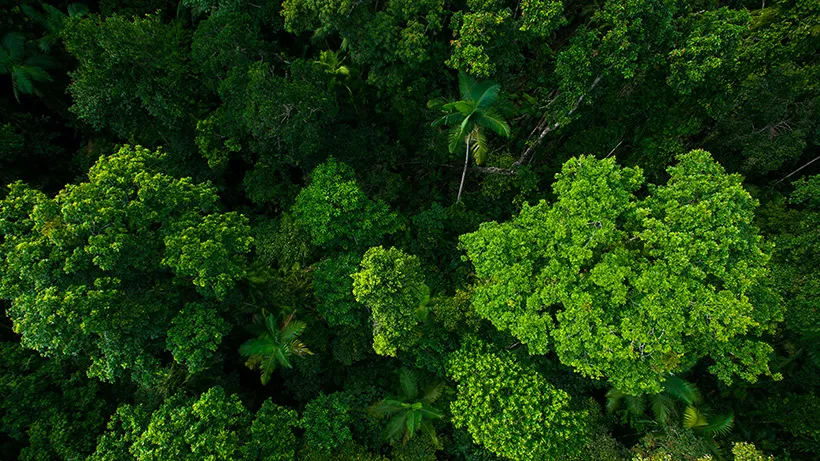Environmental impact assessment is an important part of export financing

A review of environmental risks also benefits Finnish export enterprises.
Finnvera conducts an environmental review of all export projects undertaken by Finnish enterprises where the financial institution’s liabilities exceed EUR 10 million and the repayment period of the loan is at least two years.
The recommendations have come from the OECD, and all OECD export credit agencies comply with them.
When conducting an environmental review, Finnvera’s experts strive to ensure that the foreign investor adheres to the host country’s local legislation and meets international standards. The investor bears the principal responsibility for the background study.
According to Lauri Etelämäki, Environmental Adviser at Finnvera, a review of environmental risks is standard practice and, at the same time, an advantage to Finnish export enterprises as it helps to avoid unnecessary damage to reputation.
“Exporters are helpful and give us information about the investment. Sensitive areas involving, for instance, poor population groups or endangered plant or animal species, may exist anywhere in the world,” Etelämäki says.
An environmental review encompasses the whole project even when export financing applies only to an individual delivery of equipment.
Virve Tulenheimo, Finnvera’s second Environmental Adviser, emphasises that on the whole, an investment is not turned down because of environmental assessment.
“The financier has the right to set terms for the credit agreement. Projects are so large that the investor usually wants to get things right,” Tulenheimo points out.
Four different categories
There are four categories for environmental assessment: Categories A, B, C and non-project.
Finnvera receives a few Category A projects per year. Category A means that the investment may involve significant environmental and social risks in the host country.
“Examples are pulp mill projects, power plants and mines established abroad. In general, Finnish companies deliver larger sets of equipment for mills and plants,” Tulenheimo explains.
She says that it takes months to assess a Category A project.
- “We also make an effort to visit the project site. The final guarantee decision won’t be made until afterwards,” says Tulenheimo.
The small number of Category A environmental reviews indicates that Finnish companies have not gained access to large international industry investments. As a rule, companies use export credit guarantees as protection against potential credit losses.
“It has been quieter in recent years. On the other hand, projects are increasingly massive. Ships and oil rigs have been excluded from the review, but we plan to include them in the future,” Etelämäki explains.
The second highest environmental category, or Category B, includes, among others, power plants of less than 140 megawatts. Hospitals and mobile phone manufacturing plants are examples of Category C. Finnvera conducts 5 to 10 reviews for Category B per year and dozens of reviews for Category C.
“Category B is the most difficult to assess, because the background materials are diverse. Projects in Category C have minor environmental impacts and don’t require background studies,” says Tulenheimo.
The fourth environmental category, non-project, has a misleading name. It generally consists of replacement investments.
Text: Kimmo Koivikko
FACT: What classification?
- By using export credit guarantees, exporters and providers of financing for exports usually want to protect themselves against credit losses that may arise when a foreign customer is granted payment time. If needed, it is also easier to arrange financing for a foreign customer to purchase the product if Finnvera covers some of the credit risks
- Finnvera grants guarantees for countries with adequate credit standing and assesses the creditworthiness of buyers and guarantors
- If Finnvera’s liabilities for guarantees exceed EUR 10 million or the loan repayment period is at least two years, the project always undergoes an environmental and social impact review
- In general, Finnvera’s project review encompasses the whole project even when export financing is granted, for instance, for an individual delivery of equipment
- The owner of the project company or the main supplier for the project is responsible for ensuring that the background studies are made or commissioned. The applicant for export financing is responsible for supplying the information to Finnvera
- Projects are divided into four categories: A, B, C and non-project
- Categories A and B: The applicant must provide Finnvera with a report of the assessment of environmental and social impacts. In Category A, impacts are assessed more broadly
- C and non-project: No background studies are needed
- A prerequisite for granting financing for Category A projects is that the information on environmental and social impacts is published 30 days before Finnvera signs the agreement on export financing. The relevant parties are asked to give their consent for publication.
Read more about export credit guarantees.
